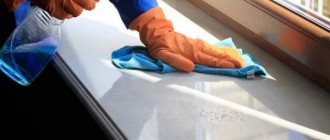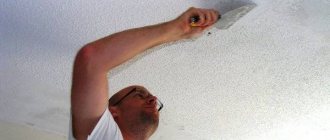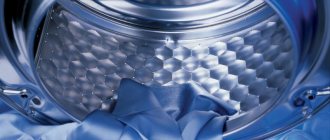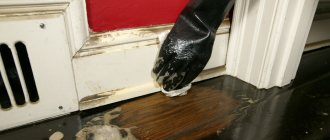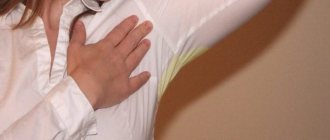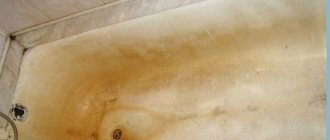Cleanliness in the kitchen depends on many factors. Most housewives monitor the condition of the floor and work surfaces, wash dishes and wash textiles on time. How long ago have you assessed the appearance of your window sill?
In the kitchen, the window sill gets dirty many times faster.
A dirty window sill can radically ruin the appearance of the kitchen. However, its care may vary depending on the material chosen. In this article we will talk about how to wash dirt off a plastic window sill and keep it spotlessly clean without much effort.
Types of stains on windowsills
First of all, you need to figure out what stains may appear on a plastic window sill . By knowing what to watch out for, you are more likely to prevent them from occurring.
Different stains can be washed off using different methods.
- Do you have flowers growing on your window? You will likely have to spend a lot of time dealing with the yellow spots that inevitably appear after watering if the pots are not airtight.
- Have you recently replaced a window? You will have to deal with drops of primer, pieces of polyurethane foam and other traces of installation work.
- After the winter period, stains from glue and adhesive tape will probably appear.
- Sintepon crumbs can stick to fat, and it will be very difficult to wash such a formation.
- Dirt coming from the windows can leave marks on the surface of the window sill.
- Do you often place pots and plates on the windowsill? There will probably be greasy stains , which are not so easy to remove.
- Even on plastic, traces of rust can accumulate , which “crawl” there from metal elements.
In addition, if the kitchen is small, many housewives use the window sill as an additional work space. This also negatively affects its cleanliness, and it is almost impossible to predict what stains will appear there.
Now let’s take a closer look at how to deal with each type of window sill contamination.
Adviсe
To avoid problems with a dirty surface, you need to follow simple rules that will protect the integrity and aesthetic appearance of the window sill:
- To prevent dirt from becoming embedded in the plastic, any contamination should be cleaned immediately, without delaying cleaning. This rule applies even to accidentally spilled clean water. When the water dries, it leaves unsightly yellow spots.
- When using any cleaning agent or detergent, after applying it to the contaminated surface, you must wait for some time for a chemical reaction to occur between the cleaning agent and the dirt. Then cleaning will take much less time and physical effort.
- When using household chemical products, you should choose only those products that can be safely used on plastic products.
- After cleaning the window sill with a homemade or industrial cleaner, rinse the surface well, changing the water several times.
- During operation, do not place hot objects on the plastic surface, as well as chemicals that can damage the material.
- When washing the window sill, remember that the side surfaces must also be cleaned.
Proper use of a plastic window sill and protection of its surface from the damaging effects of high temperatures and chemical and abrasive substances will preserve the attractive appearance of the product for a long time.
Caring for a plastic window sill at home
As we have already said, it is easier to prevent serious contamination than to try to remove it later using a variety of methods. To prevent window sill care from becoming an impossible task, we recommend that you read our tips .
Many stains are easier to prevent than to remove.
They will help you keep your window sill in order and prevent most troubles from occurring.:
- First of all, you need to find out what material your window sill is made of . For plastic ones, material of two structures can be used: smooth and porous. The first one is easier to care for, since it is enough to simply wipe it. Dirt and grease penetrate deeper into the porous structure, so you will need special detergents.
- A plastic window sill can be finished with either a thin PVC film or a wear-resistant laminate film. The second option is preferable for the kitchen: it is less susceptible to mechanical damage, which means that it can be washed with hard sponges and more effective means.
- Do not place hot pots and pans on the windowsill - they leave unsightly marks, and the surface may be damaged and you will have to repair the window sill.
- It is better to install special stands or place thin silicone mats under the flowers. This way, the pots will not leave scratches and less moisture will get onto the windowsill, which means you can avoid yellow stains on the surface of the window sill.
- Wipe the window sill with a dry cloth every day, even if it seems clean to you. This way you will remove the smallest particles of dust that eat into the coating and turn it from white to dirty gray.
- Once a week, wash the window sill with a soap solution and then wipe dry with a clean cloth . This will help wash away small particles of fat, which can soon turn into stubborn stains.
- Wash the glass and the spaces between them regularly - if they themselves are not very clean, they can become a serious source of dirt for the window sill. Therefore, do not forget to keep the entire window opening clean, and not just the part that faces your kitchen.
- Never scrub the window sill with abrasives too much! This way you can wear off the protective top layer of the coating and it will turn yellow or gray.
- Have you bought a new detergent ? Be sure to check it on an inconspicuous area of the window sill: if it contains aggressive chemicals, the color of the coating may change in the most unexpected direction.
With our tips, keeping your window sill clean will be a snap. What to do if there are stubborn stains on the windowsill that cannot be washed off with water and soap? Here are some effective recommendations that will help remove any dirt from a plastic window sill.
What not to use when washing plastic
After installing plastic window sills, as a rule, you are given a memo that states which brushes and scrapers can damage the surface. It also lists chemical compounds that should not be part of the product chosen for cleaning. And also the rules for care:
- Do not clean the window sill with cleaning products containing abrasive particles. They can damage the protective layer, and it will become yellowish or grayish;
- Test new cleaning solutions in inconspicuous areas. The color of the coating may change greatly if the product contains aggressive chemicals;
- When cleaning a window sill covered with PVC film, do not use brushes or hard sponges. They may leave scratches on its surface.
Method 1. Wash the window sill with laundry soap
If regular liquid soap or dishwashing detergent does not help, take the familiar brown bar of laundry soap. It contains more alkali, so it copes well even with greasy stains on a plastic window sill.
An old but effective way to clean a windowsill.
Grate the soap and dissolve in warm water. Then wash the window sill thoroughly. If old grease stains do not come off, moisten them with water and scrub well with soap. Leave it on for half an hour and then wash it off.
Not too old stains will come off. This method is one of the safest and most environmentally friendly.
Advice from the author : You should not use modern laundry soap in liquid form. It is much less concentrated, and therefore the effect will be weaker. And its cost is several times higher. It's better to buy a traditional bar, even if it doesn't smell very nice.
Cleaners
Modern household chemicals offer consumers a huge selection of cleaning products that can effectively cope with such contaminants.
Pay attention to:
First of all, we recommend Domestos. A very strong and effective thing. Allows you to remove any old stains, yellowness and rust. We apply it to a washcloth, distribute it evenly, leave it for a quarter of an hour, after which we rinse thoroughly. All!
Method 2: Wash the window sill with washing powder
Soap doesn't work? Use a more effective product - washing powder. It will not only remove stains, but also help whiten the surface a little.
Choose hand washing powder with bleaching properties.
Sprinkle a little powder on the surface, a little more directly on dirty areas. Use a wet, rough sponge to rub the stains first, and then the entire window sill. Rinse off the soap suds thoroughly with clean water. Then wipe dry.
This method is not suitable for window sills covered with PVC film - the hard side of the sponge can leave scratches on them.
Tip from the author: If you are using laundry detergent in the washing machine rather than hand washing, be sure to use gloves. Otherwise, you may get serious irritation, since the substances in such powders are quite aggressive.
Method 3: Wash the window sill with window cleaner
Most glass cleaners also work well on stains on the windowsill, excluding old greasy stains. Their ease of use can be considered a plus - most of these detergents are sold in convenient bottles with a spray bottle.
This product will clean not only the glass, but also the window sill.
Therefore, you just need to spray the product onto the stain, wipe the stain with a soft cloth, and then rinse the area with clean water. For stubborn stains, leave the detergent on for a few minutes before washing.
Advice from the author: The convenience of spraying is at the same time the main disadvantage of this method. Small particles of the spray enter the air and scatter throughout the room. Therefore, this method is not the best choice for the kitchen. Unless, of course, you want to season some dish with glass cleaner or enjoy Sea Fresh flavored salt.
Getting rid of yellowness with chemicals
The use of traditional methods of cleaning and bleaching plastic does not always give the expected result. There are two reasons for this:
- low effectiveness of funds
- lack of experience and theoretical knowledge preventing users from achieving optimal results
Therefore, for better treatment of plastic windows, specialized household chemicals are used. They can be made in different forms - from regular liquids to gels or sprays.
The most effective compositions for car maintenance are produced using the most advanced technologies. The cost of the products is quite high, but the quality of their work is much higher than that of conventional household compounds.
Let's look at several groups of chemicals used to remove the yellow tint from PVC profiles.
Special napkins
There are special wipes for cleaning windows on sale. They are made of microfiber and effectively remove dirt from both plastic and glass surfaces. However, they do not act independently; a detergent is required.
There are also wet wipes for cleaning car interiors. They are sold in tubes of 25-30 pieces. The wipes are pre-impregnated with cleansing compounds with a complex effect. These are polishes with chemical cleaning components. In addition to cleaning, such wipes scent and polish the surface, giving an even shine to PVC surfaces. Compared to folk remedies, napkins are much more effective.
Solvent
Organic solvents of the acetone series (acetone itself, Solvents 645, 646 or 647) have a very aggressive effect on PVC plastic. They are able to dissolve and remove various types of contaminants, wash away fats, paint stains, old oil or other deposits.
If the plastic has turned yellow, the use of such solvents often helps solve the problem - just wipe the surface with a soft cloth with a solvent.
However, the results of such processing are not always positive. Here everything depends on the nature of the yellowness (the result of pollution, or the transformation of the structure of the material under the influence of UV rays). In addition, the quality of the plastic may not be high enough to withstand such processing.
Therefore, you must first check the reaction of the profile to the solvent by applying a small amount in an inconspicuous place. If no undesirable consequences occur, the plastic can be processed.
Plastic restoration products
Car interior maintenance products contain special products that allow you to restore the surface of plastic parts. They allow you to get rid of scuffs and minor scratches, give an even shine and remove yellowness. Such compositions also show high efficiency when cleaning plastic windows, removing yellowness and restoring the original appearance of profiles and window sills.
In trade catalogs, such products are called plastic restorers. There are a lot of them, which makes it difficult to choose. In addition to the large number of names, the effect also differs - some compounds are only polishes, while others are able to completely remove scratches and return the plastic surface to its original form.
In order to choose the right composition, you need to consult with the seller, explaining to him your problem. In addition, you must carefully study the information on the packaging, which details the capabilities of this composition and provides instructions for use.
Method 4. Clean the windowsill with vinegar
Oddly enough, vinegar is considered one of the most effective methods for cleaning window sills. It dissolves greasy stains quite well, helps get rid of rust and slightly brightens the window sill.
Vinegar removes even old stains.
Dilute vinegar in a one to one ratio and apply to the windowsill. Moisturize stains well, especially old ones. Leave the solution for 10-15 minutes. However, please note that in the case of PVC film, especially colored film, you need to act carefully - vinegar can change the color of the surface.
Carefully rinse off the solution and wipe the window sill dry. If necessary, the procedure can be repeated.
Advice from the author : Acetic acid has a negative effect on the skin of your hands, so do not forget to use gloves.
Removing traces of tape
Scotch tape always leaves marks on window sills and glass that are difficult to get rid of. Tape stains that are not removed in time turn into stains of adhering dirt. Several ways to help answer the question of how to clean plastic windows from tape.
- Fight fire with fire. Take a new piece of tape and apply it to the stains from the old tape. Then quickly and sharply tear it off. Repeat the procedure until the tape marks disappear completely.
- You will need any vegetable oil. Apply it with a cotton pad to the tape stains and wait 10-15 minutes. Then wipe with paper towels.
- Remove tape stains with a simple eraser. It is enough to rub the areas with remaining tape well.
Method 5. Remove dirt from the windowsill with a melamine sponge
Several years ago, melamine sponges became a real hit among housewives. It is enough to simply run a moistened sponge over the stain - and it will dissolve almost before your eyes.
The melamine crystals that make up the sponge literally dissolve dirt.
Outwardly, they are similar to the usual foam sponges, but have a slightly more durable structure and seem a little damp to the touch. Melamine really does a good job of scrubbing off any dirt, but for old stains you will have to make a significant physical effort.
Advice from the author: Unlike foam rubber, melamine cannot be called a material safe for human health. Therefore, wash the window sill thoroughly with clean water after finishing cleaning. In addition, the sponge may crumble during use, so carefully remove any crumbs so that they do not get on your dishes or food.
Method 6. Making a PVC paste to clean the window sill
The name sounds mysterious, but in fact the mixture consists of only two components - toothpaste and chalk. Due to its abrasive properties, this composition cleans stains well, while at the same time brightening the window sill.
Time-tested method.
Mix the ingredients in equal proportions and do not forget to crush the chalk well: large grains easily leave scratches.
Apply the mixture with a damp soft sponge, lightly rubbing into the window sill. After all the dirt has been removed, rinse the surface with clean water and wipe dry. Repeat if necessary.
Advice from the author : The paste should be the most ordinary, plain. Otherwise, you may get a completely unpredictable effect.
Method 7: Mixture of vinegar and baking soda to remove old stains
If you need to remove an old, stubborn greasy stain, you can do without special detergents. Start by applying a thin layer of baking soda to the dirt using a damp sponge.
A mixture of baking soda and vinegar for the toughest stains.
Then add a little vinegar to the powder. Wait for the chemical reaction to complete. Carefully remove the mixture along with any loose dirt. Repeat if necessary.
Advice from the author: The mixture is quite aggressive, so try not to use it unless absolutely necessary.
How to clean a window sill after renovation
All of the above recommendations are good if you need to remove stains that have arisen during the cooking process in the kitchen. But what if the problem is more serious than ordinary household pollution?
Repair work leaves a lot of stains on the windowsill.
For example, if you need to wash a plastic window sill after repair work. Proceed as follows :
- Remove all plugs , as a lot of different dust usually accumulates under them. To begin, thoroughly vacuum the window structure, then wipe the surfaces with a damp sponge, paying special attention to the dirty areas.
- If there is any primer, putty or plaster left on the window sill, remove the residue with abrasives . You can use a special cleaner from the hardware store or use a mixture of baking soda and vinegar - both methods will be quite effective if not much time has passed. But after a few days, only professional solvents will help you, which are not cheap - keep this in mind. Apply the selected product for half an hour, then remove with a rubber spatula or just a wooden spatula. Rinse off any remaining residue thoroughly with warm water.
- If there is foam left on the window sill, use a stiff brush - with its help you can easily remove dirt. Remains of construction dirt can be easily washed off with a solution of laundry soap.
Removing aggressive stains
Often, after repairs, aggressive marks remain on PVC windows, which cannot always be removed with store and home remedies. They can also be removed at home.
Scotch tape marks
After removing the tape, sticky marks remain on the plastic. They cannot be removed with a dry cloth. Folk remedies will help here:
- Glue a piece of fresh tape onto the remaining mark and tear it off with a sharp jerk. The process continues until a positive result is achieved;
- Lubricate the sticky spot with any vegetable oil. After 10 minutes, the dirt is wiped off with a paper napkin;
- the sticky trace is erased with cotton wool or gauze soaked in ammonia or ordinary alcohol.
If small traces of tape remain, do not immediately resort to aggressive cleaning methods. You can try to erase the stain with a regular eraser.
Traces of paint
On plastic, traces of paint are a serious problem that requires immediate removal. First, you need to resort to a gentle method, smearing the dried paint with silicate glue. As the glue dries, it will begin to shrink, pulling the bulk of the paint with it.
Adjusting plastic windows and doors yourself if they sag or sag How to adjust plastic windows with your own hands if the sashes sag or there is a draft from the windows.
If this does not help, take a piece of cotton wool, soak it in nail polish remover and wipe the painted area. It is important to pay attention that the liquid does not contain acetone. Otherwise, this substance will corrode the plastic.
Polyurethane foam
Sticking foam in the wrong place is a common occurrence after repairs. Cosmofen is sold specifically for PVC windows. Uncured foam is cleaned off with a plastic scraper, and the remaining stain is wiped off with a rag soaked in this solution.
Dry foam should be cut off as much as possible with a sharp knife, and the remaining stain should be moistened with Dimexide medical solution. After 5 minutes, loose residues are wiped off with the hard side of a dishwashing sponge.
The store sells special foam solvents. Before using them, you must carefully study the instructions, otherwise the aggressive solution will do more harm than good. The most harmless product for plastic and the skin of the hands is SOL OFF Delicat Barton'S.
Soot
On the street side, a lot of soot settles on PVC frames. It is formed during the operation of factories and from vehicle exhaust gases. Inside the room, soot settles from tobacco smoke and food burnt during cooking. A soap solution or baking soda will help get rid of it. They simply wipe the window, then rinse with clean water. You should not use aggressive anti-soot products.
How to whiten a yellowed window sill
Under the influence of constant sunlight, changes in moisture and temperature, the window sill can lose its brilliant white color and take on a repulsive yellow tint.
Whitening a yellow window sill is quite possible.
Fixing the problem is not difficult if you use the following recommendations:
- First of all, make sure that the yellowness is a consequence of a change in color, and not of dust and dirt on the windowsill. In the second case, it is enough to wash it properly to get rid of the problem.
- If washing does not help, use rubbing alcohol. Apply it to a lint-free cloth and gently wipe the surface. Don't rub too hard as this can damage the plastic coating.
- Some people use acetone to lighten plastic window sills. The method cannot be called safe - this way, of course, you will remove the yellowness, but there is a high probability that it will happen along with the top layer of plastic.
- Try mixing soda ash with washing powder in a one to one ratio. Apply the mixture to the surface and leave for two to three hours, then rinse with warm water. The window sill should lighten.
How to care for rubber seals and fittings on plastic windows?
Many people ignore this point, but it is very important in window care. After all, broken or poorly functioning fittings will allow dust, cold, and insects to enter your home.
- A couple of times a year - usually in spring and autumn - after general washing of the windows, you should lubricate the rubber window seals with a special silicone grease (sold in hardware stores or companies that install this type of window). If there is no lubricant, you can use glycerin. Apply the product to a soft brush or cotton swab and go over the seal.
- The metal fastenings of the frame and the handle mechanism must also be lubricated with machine oil twice a year. Apply oil with a brush or swab to the fasteners and closing mechanism. To better distribute the oil, close and open the window wide several times. At first, it is advisable to keep the windows closed to avoid dust getting into the fresh oil. After a few days, remove oil stains, if any, with a soft cloth.
If you can't remove stains
It happens that some stain is too ingrained or old yellowness cannot be removed. In this case, you can save the window sill only by updating it a little.
We do not encourage you to do repairs at all. It is enough to purchase a white PVC film and carefully cover the window sill. The advantage of this method is that you can choose any color - even with a pattern. However, this does not mean that you need to stop washing the window sill and just re-stick the film from time to time.
A wide palette will allow you to update the window sill and refresh the interior.
In addition, if you use our recommendations, then you will not need such drastic measures - the window sill will already look impeccable.
Type of plastic
Everyone knows that there are expensive and cheap plastic windows. And almost no one wonders why they are so different. Whatever model the buyer chooses, it will in any case be made of PVC (polyvinyl chloride). The material from different manufacturers differs only in the amount of plasticizers - the lack of these components leads to the fact that the plastic becomes brittle and brittle. So expensive models are stronger.
If we talk directly about window sills, they differ in the surface film. And it can be divided into three categories - economy, standard and luxury. For the economical series, the window sills are covered with the same PVC. It's cheap and reliable as long as you don't scratch or stain the surface too much. For standard models, melamine film is used. It is more resistant to damage and detergents and can even withstand a smoldering cigarette without visible consequences. Luxury series window sills are coated with melamine resin - this is a durable and environmentally friendly material with high resistance to damage and aggressive environments.
How will this information be useful when you need to find out how to clean a plastic window sill? Everything is simple here - the higher the category, the wider the selection of funds you can use. In addition, this information is useful at the planning stage - on more expensive models, dirt practically does not linger and does not eat into the surface, they are easier to clean.
